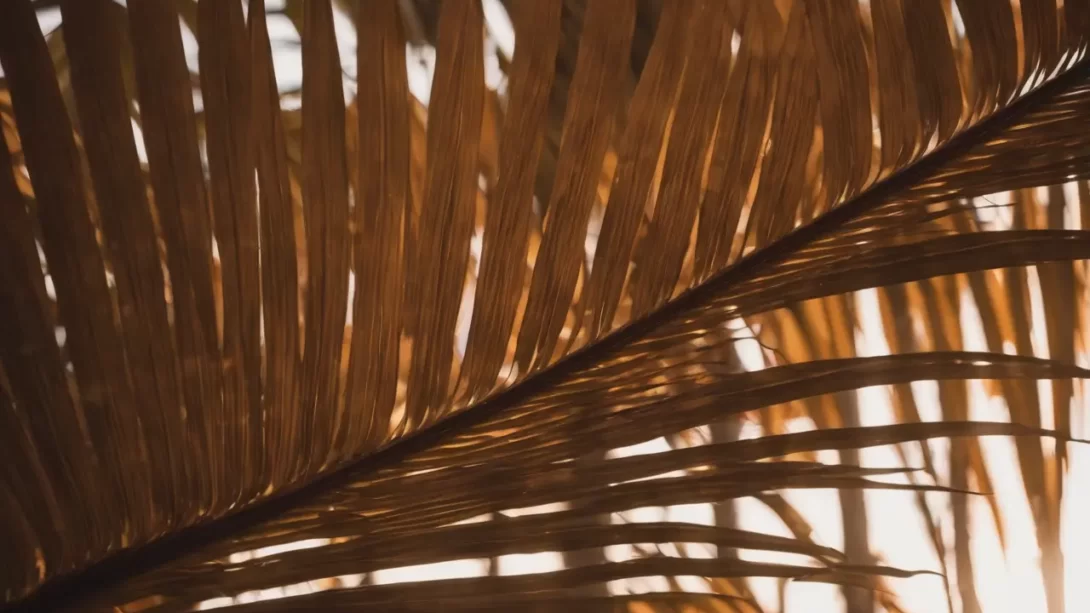Brown leaves on palm trees can be a common sight, but they often leave gardeners and homeowners in a quandary: should these unsightly leaves be trimmed off or left alone? This question is not just about aesthetics; it’s also about the health and maintenance of the palm. This article aims to explore the factors influencing whether to cut off brown palm leaves and how to do it correctly if needed.
Palm Health
Palm trees, like all plants, go through a natural growth cycle. As part of this cycle, older leaves can turn brown and die as new growth emerges. This is a normal process, but sometimes browning leaves can indicate health problems. Understanding the underlying cause of the browning is essential to make an informed decision about trimming. Factors like water, light, soil conditions, and overall tree health play a crucial role in the appearance of palm leaves.
Reasons for Browning Leaves
Browning leaves on a palm can be attributed to several factors. Natural aging is the most common cause, where lower leaves gradually brown and die off. Water stress, either too much or too little, can also cause leaves to brown. Nutritional deficiencies, particularly a lack of essential minerals like magnesium or potassium, are another common cause. Lastly, diseases and pests can lead to leaf browning. It’s crucial to identify the correct cause to address the problem effectively. For instance, overwatering can lead to root rot, which will only worsen if additional water is provided in an attempt to ‘revive’ the brown leaves.
To Trim or Not to Trim
Deciding whether to trim brown leaves from a palm tree involves considering both the health of the plant and aesthetic preferences. From a health perspective, removing dead or dying leaves can be beneficial. It can improve air circulation around the palm and reduce the risk of pests and diseases that often target weakened or dead plant material. However, if leaves are only partially brown and still have some green, they are still capable of photosynthesis and contributing to the palm’s growth. In this case, it might be better to leave them until they have fully browned.
From an aesthetic viewpoint, trimming brown leaves can enhance the palm’s appearance, making it look well-maintained and healthy. This is often a significant consideration in landscaping and garden design.
How to Properly Trim Palm Leaves
If you decide to trim the brown leaves, doing it correctly is vital to avoid damaging the palm. Here are the steps and precautions for proper trimming:
- Choose the Right Tools: Use sharp, clean pruning shears or a saw for larger fronds. Disinfect tools before use to prevent the spread of disease.
- Safety First: Wear protective gloves and eyewear, especially when dealing with taller palms. If using a ladder, ensure it’s stable and consider having someone assist you.
- Trimming Technique: Cut the frond close to the trunk, but be careful not to damage the trunk itself. Never pull off the leaves, as this can cause unnecessary injury to the palm.
- Limit Trimming: Only remove fronds that are completely brown. Avoid cutting off green or partially green fronds, as this can stress the palm and slow its growth.
When to Avoid Trimming
There are situations when trimming brown palm leaves might be more harmful than beneficial. For instance, if the palm is stressed due to disease, drought, or nutrient deficiencies, additional stress from trimming can exacerbate the problem. In such cases, it’s better to address the underlying issue before any pruning. Also, during certain times of the year, particularly colder months, it’s advisable to leave the leaves as they can provide some insulation and protection to the palm.
Aftercare Following Trimming
Once you have trimmed the brown leaves from your palm, appropriate aftercare is crucial to support its recovery and ongoing health. Here are some key aftercare tips:
- Watering: Ensure the palm gets adequate water, but be cautious of overwatering, especially for palms that are susceptible to root rot. The soil should be moist but not soggy.
- Fertilization: Provide a balanced fertilizer that’s specially formulated for palms. This should include essential nutrients like nitrogen, potassium, and magnesium, which are critical for palm health.
- Monitoring for Pests and Diseases: Regularly check your palm for signs of pests or diseases. Early detection can prevent major problems and help maintain the overall health of your palm.
- Sunlight and Placement: Ensure your palm is receiving the right amount of light according to its species. Some palms prefer full sun, while others thrive in partial shade.
- Soil Quality: Maintain good soil quality around your palm. Aerating the soil and adding organic matter can improve drainage and nutrient availability.
Conclusion
In conclusion, while brown leaves on a palm tree can be unsightly, deciding whether to trim them should be a carefully considered decision based on the health of the palm and aesthetic desires. If trimming is necessary, doing so correctly is crucial to avoid damaging the plant. Post-trimming care, including proper watering, fertilization, and monitoring for pests and diseases, will help ensure the continued health and beauty of your palm. By understanding the needs of your palm and providing appropriate care, you can enjoy the aesthetic and environmental benefits these magnificent plants offer.




